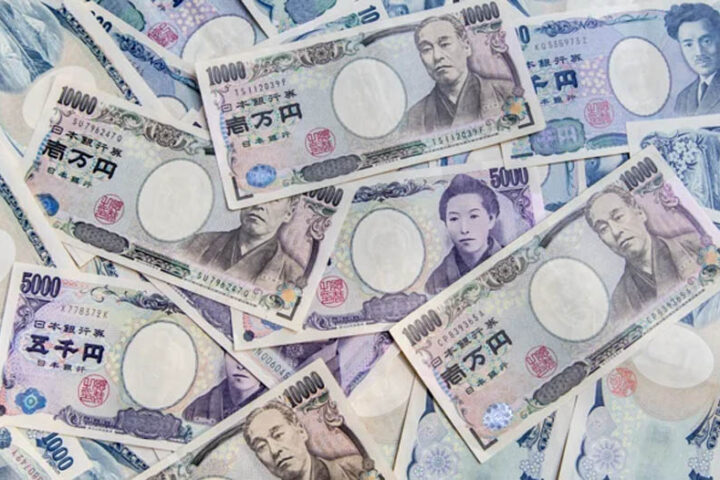By Jeffrey Halley
With a dearth of heavyweight data this week until Friday’s US CPI, we are likely to experience choppy trading, driven by swings in sentiment and headlines hitting the news ticker. Sure enough, that is what occurred overnight after US retailer, Target, gave a soft outlook and announced it had too much inventory and would cut prices to shift it.
Investors in New York immediately interpreted that as the high in US inflation was nigh. US yields duly fell, US 10-years moving back below 3.0%. That saw some US Dollar weakness, gold rally a little and of course, lower inflation means buying equities, which is what happened.
To be fair, consumer discretionary got a pasting, but other sectors such as big-tech roared higher.
Wednesday night may well be another headline that the FOMO gnomes of Wall Street don’t like, and markets could well unwind all the overnight moves, or not. Roll on Friday.
In Asia on Wednesday, we had a few data releases ahead of the main event, the Reserve Bank of India’s policy decision.
On Tuesday, the Reserve Bank of Australia surprised markets by announcing a 0.50% rate hike. Local equities got clubbed, and the Australian Dollar traded in a near 100 point range as the RBA becomes the latest central bank to climb off the fence on inflation.
Interestingly, the incoming Philippines Central Bank Governor also signalled rate hikes ahead, and after a slow start, Asia-Pacific central banks are playing catchup to the Federal Reserve. That should partially insulate Asian currencies from further weakness.
Wednesday morning, Japan’s final Q1 GDP Growth received a tiny upward revision to -0.10% as reopening saw some strength in the consumer segment.
The data is now historical and has been ignored by markets which remained laser-focused on the rapid ascent of USD/JPY. It hit 133.00, as the US Fed continues to signal more tightening, while the Bank of Japan signals it has no intention of adjusting its ultra-easy monetary policy.
South Korean Q1 GDP got a slight downward revision from 0.70% to 0.60%. Again, in the context of recent events, the data is old news now and will be mostly ignored by markets.
The data releases across Europe and the US Wednesday are strictly second-tier.
Probably the most interesting will be the US official crude inventory data after last week’s surprise 5 million-barrel drop. With Brent crude and WTI both around $120.00 a barrel, sharp falls in headline crude inventories or refined products could spur another rally in oil prices. Otherwise, markets are swinging on sentiment shifts and headline risks.
Asia follows Wall Street higher
US markets seized on Target’s softened outlook to price in peak US inflation on a slow news day, sending Wall Street sharply higher overnight. The S&P 500 rose 0.95%, the Nasdaq rallied 0.94%, and the Dow Jones gained 0.80%.
In Asia, US futures dropped sharply. Nasdaq and S&P 500 futures fell 0.45%, with Dow futures easing 0.30%. The price action reinforces the theory that it is tail-chasing fast-money dominating moves on Wall Street this week.
In Mainland China, markets appear to be suffering a bout of profit-taking after a strong performance this week.
China’s Vice Commerce Minister said Wednesday that foreign trade faced huge pressures and uncertainty, which won’t have helped sentiment. The Shanghai Composite is 0.70% lower, while the CSI 300 has lost 0.40%. Hong Kong is ignoring the mainland noise, however, remaining laser-focused on the overnight Wall Street gains as the Hang Seng rallies 1.65% higher.
European markets gave back some of Monday’s gain overnight but will probably use the price action from late in New York and Asia on Wednesday as an excuse to open slightly higher.
Oil steady in Asia
Oil prices rose slightly overnight as tight refined supplies persist in the US, industrial action in Norway and a shutting down of a Libyan oilfield continued supporting prices at recent highs.
Brent crude finished 0.75% higher at $120.75 a barrel, and WTI rose 0.30% to $119.75. Asia is once again adopting a wait-and-see position, with Brent and WTI unchanged in regional trading.
Oil prices remain at post-Ukraine invasion highs if you strip out the days when tanks rolled across the borders.
Returning Venezuelan and Libyan production to Europe and North America, should it occur, will not be material enough in the shorter term to force prices lower. Refining margins globally suggest that demand for petrol and diesel remain in heavy demand, with the refining logjam in refined products backstopping crude prices.
A reopening China is also supportive of oil prices.
Brent crude has resistance at $122.00, and $124.00, with support at $116.00 and $112.50. WTI has resistance at $121.00, with now support at $115.00 and $111.25.
Gold flip-flop continues
A weaker US Dollar into the end of the New York session saw yet another mechanical response by gold, which rose 0.56% to $1852.50 an ounce in another snooze-fest session.
In Asia, some US Dollar strength sent it 0.25% lower to $1848.00 in an automatic response. Until we get a material move one way or the other by the greenback, gold’s range trading looks set to persist.
Gold has resistance at $1870.00, followed by the 100-DMA at $1889.00, and then $1900.00. Support is at $1837, $1830.00, and then $1780.00. I do not discount a disorderly retreat if the latter fails. The wider $1830.00 to $1870.00 range seems set to continue until Friday.
Jeffrey Halley is Senior Market Analyst, Asia Pacific at OANDA
Opinions are the author’s, not necessarily that of OANDA Global Corporation or any of its affiliates, subsidiaries, officers or directors. Leveraged trading is high risk and not suitable for all. Losses can exceed investments.







